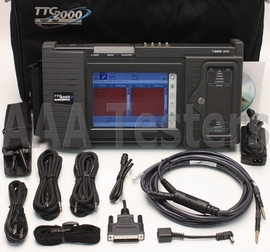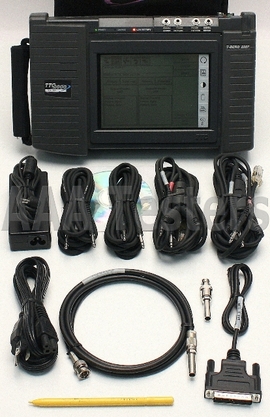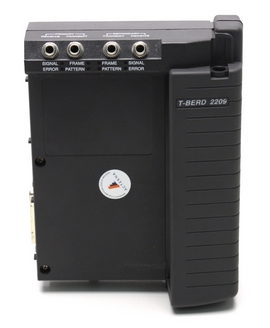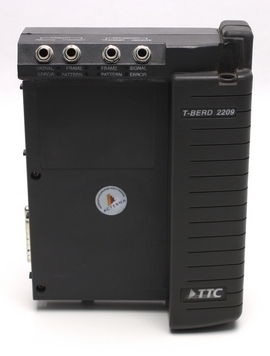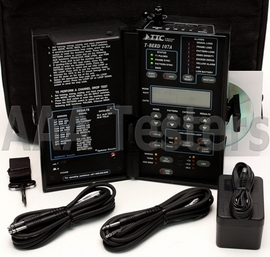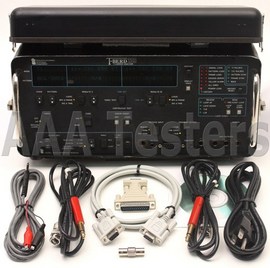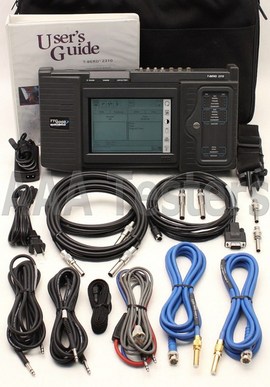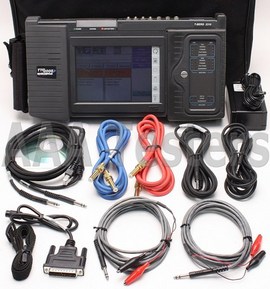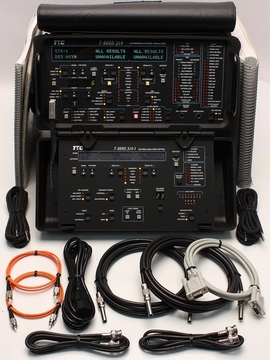
If you’re looking to Sell T-BERD 310 DS1 / DS0 Communications Analyzer
TTC TBERD 310
As more and more of your customers demand advanced SONET and ATM services, it becomes critical to have the capability to test multiple technologies without requiring multiple test sets. Meet the T-BERD 310—the total network test tool that packs SONET, ATM, DS3, and DS1/0 testing power into one dynamic instrument. The T-BERD 310 possesses one of the testing industry’s best performance and reliability records and is approved by more service providers than any other SONET tester.
Flexible T-BERD 310 packages take the guesswork out of SONET testing by offering electrical, optical, and high-speed optical options tailored to meet your special needs. An optical spectrum analyzer for testing dense wave division multiplexing (DWDM) networks is also included in the T-BERD 310’s portfolio of fieldupgradeable options. Plus, an internal modem option and a suite of graphical remote software packages enable you to isolate problems remotely before dispatching a technician.
By regularly adding options to your T-BERD 310, you’ll maximize your investment and ensure that you stay up-to-date with today’s services. As technology changes and your networks grow, you can count on the T-BERD 310 to support you with convenient, easy-to-use upgrades.
The T-BERD 310’s extensive set of measurements, drop and insert functions, and remote control features give you complete testing capabilities in laboratory, manufacturing, central office, or outside plant environments.
Central Office
Maximize maintenance and troubleshooting efficiency with dual DS3 receivers, extensive DS1 analysis, and a wide range of simultaneous error measurements. Quickly set and verify signal level and frequency using signal analysis and pulse shape measurements; verify timing configuration, circuit setup, and easily troubleshoot mid-span meets. The T-BERD 310 also performs critical optical return loss measurements, so you can install and troubleshoot high-speed optical networks.
Laboratory
Simulate ATM traffic conditions and perform detailed testing using advanced error insertion, complete pulse shape analysis, and jitter measurements. Measure automatic protection switch (APS) time, access jitter spectral characteristics, or access the data communications channel from SONET. Perform automatic DS3 and SONET conformance testing. Utilize the TTC Distributed Test Manager (DTM) scripting capabilities to automate regression test suites.
Mobile Telephone
Switching Office (MTSO)
Detect physical layer problems and test DS0, DS1, and DS3 through OC-12 at the MTSO. Quickly troubleshoot a wide range of problems associated with wireless networks. Field upgrade to SONET as your cellular network requires higher bandwidth. In one step, scan all 28 DS1s within a DS3 or SONET signal for framing format, errors, timing slips, and alarms. In-service testing is also supported, with DS1 drop and insert on a live DS3 signal.
Manufacturing/Production
Fully integrate the unit into your automated test system with the RS-232/IEEE-488 remote control interface and rack mount capability. The TTC DTM software for Windows? can automate acceptance test suites for maximum flexibility in distributed test applications. National Instruments Corporation’s LabVIEW drivers provide a platform-independent, graphical programming language for the T-BERD 310.
Buying, Selling, Trading T-BERD 310 DS1 / DS0
DS1/DS0 testing capabilitie
The DS1/DS0 testing capabilities of the T-BERD 310 offer unmatched flexibility for testing at a variety of test access points. At DS1, it acts as a stand-alone DS1 test set. With the flip of a switch, the test set immediately begins analyzing DS1 tributaries at DS3 or SONET access points. These features enable you to install, qualify, and troubleshoot DS1 signals with one test instrument. DS1/DS0 test capabilities include:
DS1 Scan and Automatic Payload Detection
In one step, scan all 28 DS1s within a DS3 or SONET signal for framing format, errors, timing slips, AIS, CRC errors, and alarms. Scan continuously, or trigger and hold on a DS1 with user-selectable error and alarm events. Reduce problem isolation time further by using automatic payload detection.
ESF Data Link Analysis
Decode BITS synchronization messages to verify the quality of network timing sources. Analyze far-end Performance Report Messages (PRMs) per ANSI T1.403. Generate PRMs emulating customer or carrier equipment. Transmit out-of-band line, payload, or network loop codes over the ESF datalink.
Programmable Loop Codes and Test Patterns
Use 3- to 8-bit programmable loop codes for non-standard DS1 equipment, or select standard in-band Facility 1, Facility 2, or CSU, or out-of-band line, network, and payload. Use 3- to 24-bit programmable test patterns for custom tests, or choose fixed, pseudorandom, or long user patterns (LUP).
DS1 Timing Slips
Quickly identify clocking impairments, a common source of intermittent errors in asynchronous networks and jitter in SONET networks. Access your DS1 timing reference from SONET, DS3, DS1, or BITS access points.
Line Coding
Transmit AMI or B8ZS formats. Automatically detect received AMI or B8ZS coded signals to identify misconfiguration problems quickly.
DS0 Analysis
Verify voice quality or analyze signaling bits by dropping the voice channel from DS1 to OC-12 access points.
ATM Testing
The T-BERD 310 provides ATM testing capability to allow verification of both public and private networks. Combined with the test set’s existing physical layer capabilities, the groundwork can be laid for high quality ATM service. Prequalification of ATM networks is critical in the prevention of congestion and network failures due to higher layer protocols generating excessive cell retransmission.
The unique ATM features of the T-BERD 310 provide comprehensive and easy-to-use ATM layer testing capabilities, including cell search and preview mode, cell loss and delay variation measurements, and OAM cell capabilities. Front panel ATM error and alarm insert, as well as front panel LEDs provide alarm notification and easy access to the ATM signal. In addition, these powerful features are added to field T-BERD 310s without the need to remove any existing options from the test set, protecting your past, present, and future investment.
If you’re selling your T-BERD 310 DS1 / DS0 please fill out form on the right hand side of page.

